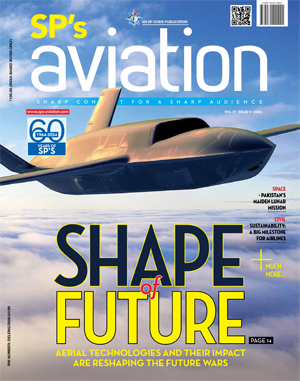INDIAN ARMED FORCES CHIEFS ON
OUR RELENTLESS AND FOCUSED PUBLISHING EFFORTS

SP Guide Publications puts forth a well compiled articulation of issues, pursuits and accomplishments of the Indian Army, over the years

I am confident that SP Guide Publications would continue to inform, inspire and influence.

My compliments to SP Guide Publications for informative and credible reportage on contemporary aerospace issues over the past six decades.
A Word from Editor

There is little doubt that India’s civil aviation sector is poised for an astronomical growth. But lack of infrastructure in practically all departments of civil aviation could spoil the party.
In the last couple of weeks, Indian skies were not only awash with the rain-gods showering their largesse to take this year’s monsoon rainfall to near normal, they were also witness to a rain of milestones in India’s aerospace sector. Interestingly, the spate of spectacular achievements was not limited to the defence sector alone. The civil aviation and space sectors experienced their own moments of glory.
On the night of August 22, the first fully modified Brazilian Embraer E-145 aircraft landed at HAL airport, Bangalore. The aircraft was received at the Centre for Airborne Systems’ (CABS) hangar, which incidentally, will be responsible for the platform’s overall integration with a mission system developed by various laboratories of the Defence Research and Development Organisation (DRDO) to serve as ‘airborne early warning and control system (AEW&CS) for the Indian Air Force (IAF). The IAF initial order stands for three systems but hopefully, will be extended to include three more aircraft.
On September 8, at 1705 hours (IST), the first advanced Boeing 787 ‘Dreamliner’ of Air India touched down at Delhi’s Indira Gandhi International Airport (IGIA), ending a four-year wait to add this next-generation airplane to its fleet. Given a royal water-cannon salute on arrival, the aircraft, after a brief religious ceremony, was formally inducted into Air India. But the big question is whether the all-new airplane, featuring the very best of technologies that provide exceptional value to airlines will help bailout the beleaguered national carrier from its present financial mess.
The picture on India’s space front however remained bright with the Indian Space Research Organisation (ISRO) achieving a historic milestone on September 9, with the launch of the Polar Satellite Launch Vehicle (PSLV). It was a remarkable event as it was ISRO’s 100th mission.
India’s overall civil aviation scenario too has a bright future was reiterated by none other than Boeing’s bigwig Dr Dinesh Keskar while releasing the Boeing 2012 India Market Outlook in Delhi on September 4. Describing India as the “Big Gorilla” and the “Shining Star” he said that India’s commercial aviation fleet is likely to grow by 4.5 times the size in the next 20 years.
There is little doubt that India’s civil aviation sector is poised for an astronomical growth. That, this growth is not only restricted to large airlines but is all inclusive is more than evident when one sees how the regional and general aviation scenarios are also straining at their respective leashes. But lack of infrastructure in practically all departments of civil aviation unless addressed on war-footing could spoil the party. This edition carries two revealing articles, one: on the growth potential of regional airlines, substantiating the growth potential of India’s civil aviation and the other, on woeful state of fixed base operators in India.
The question that continues to come to one’s mind is: why the powers that be in India resort to only piecemeal improvements/reforms. Take the case of new guidelines related to defence procurement (covered in the In Focus/Forum columns) where transfer of technology has been included as an eligible component of the offset obligations in defence deals. But will it really help India in a timely manner to realise its dream of attaining self-sufficiency?
All this and much more. Happy reading.





